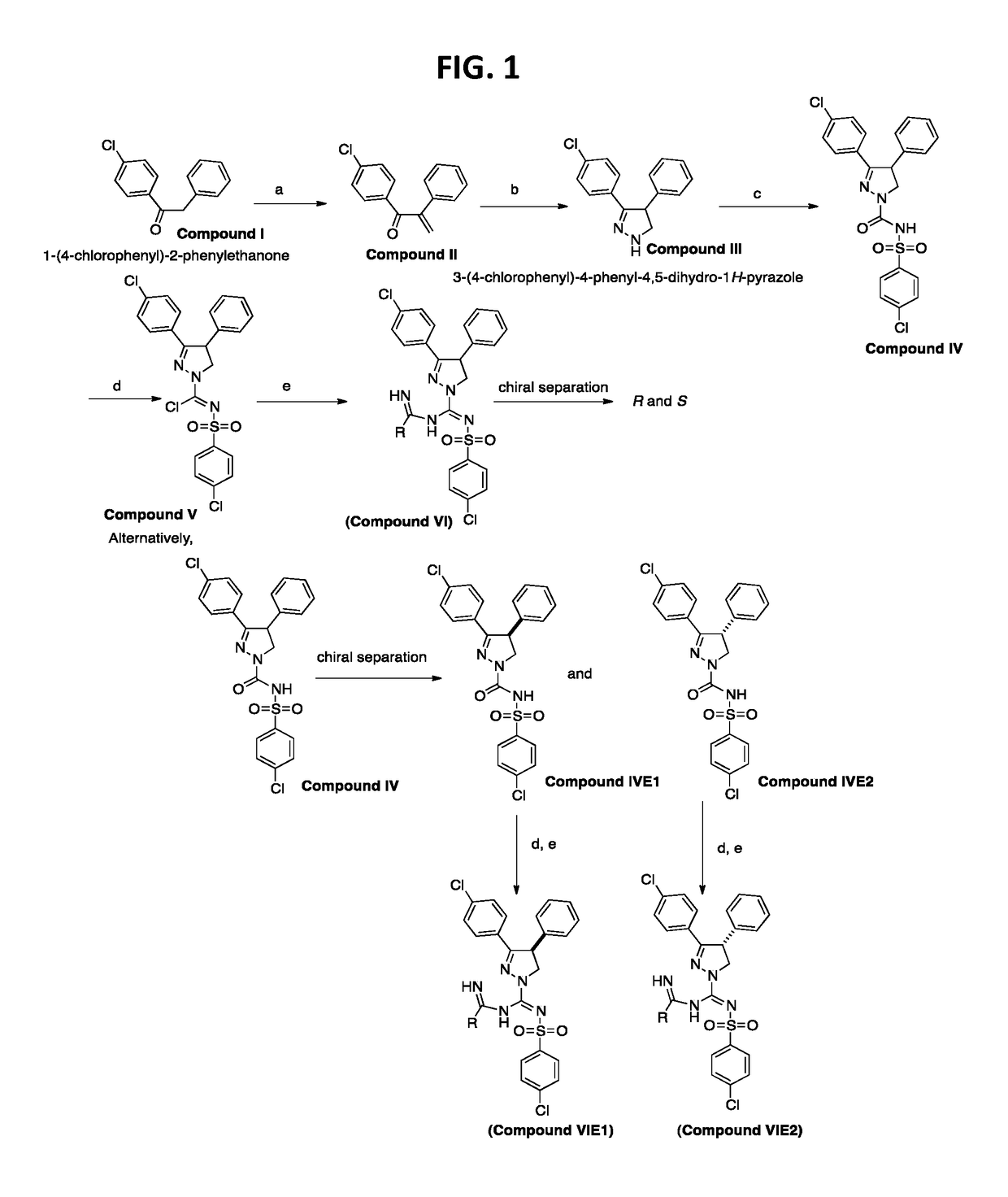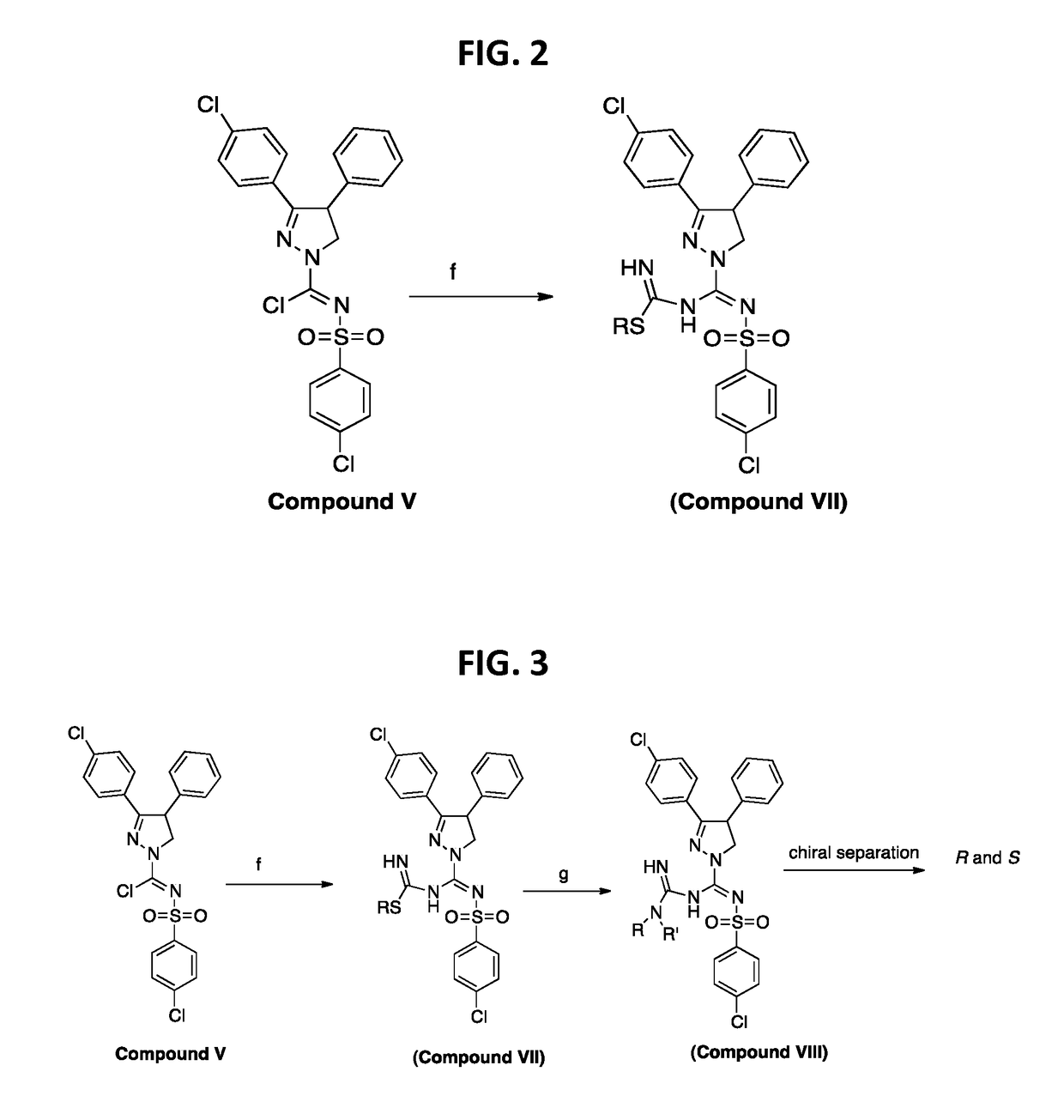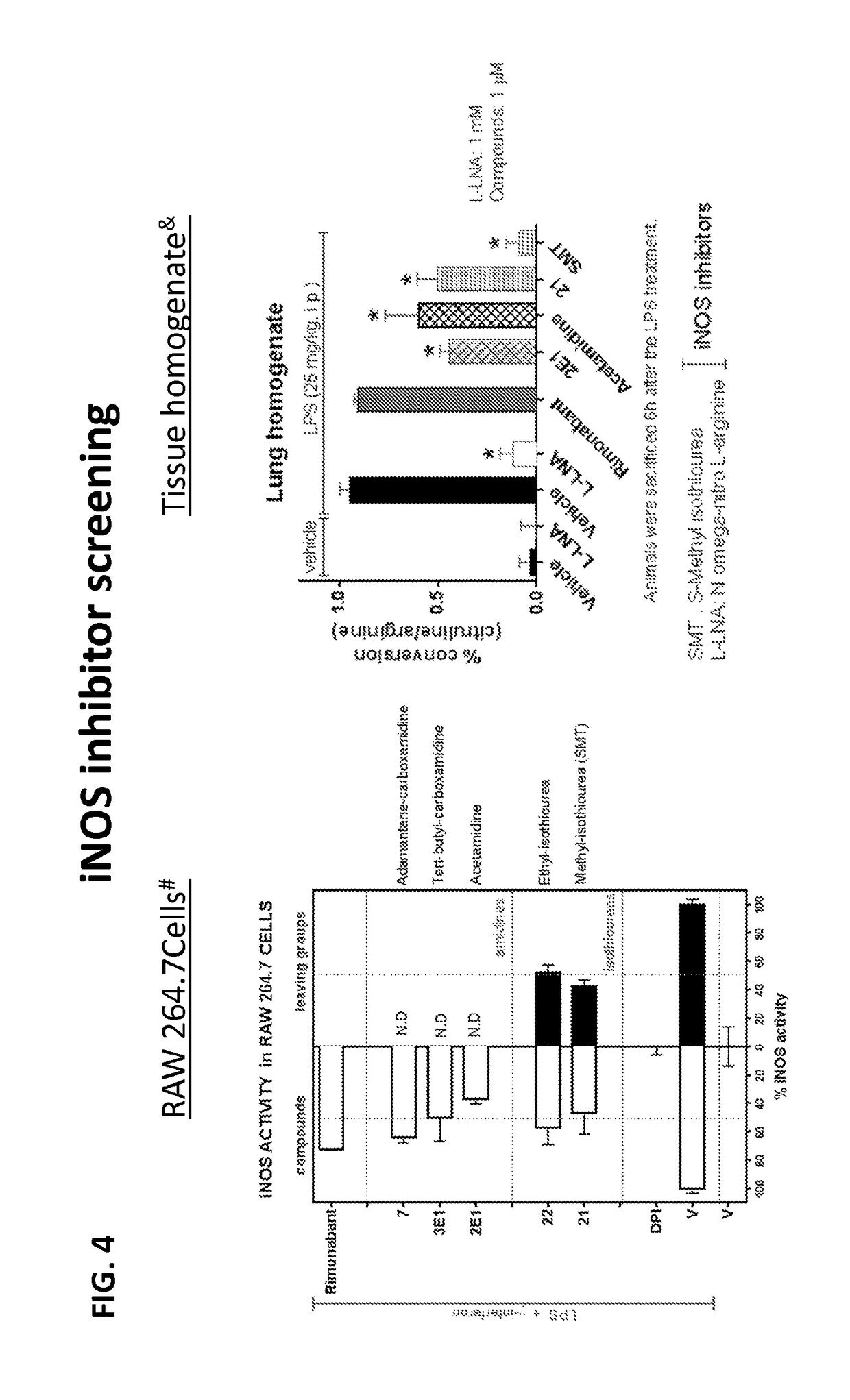Cannabinoid receptor mediating compounds
a technology of cannabinoid receptors and compounds, applied in the field of cannabinoid receptor mediating compounds, can solve the problems of halting the further therapeutic development of this class of compounds
- Summary
- Abstract
- Description
- Claims
- Application Information
AI Technical Summary
Benefits of technology
Problems solved by technology
Method used
Image
Examples
example 1
Illustrative Example 1
[0205]
To the imidoyl chloride compound V (500 mg, 1.02 mmoles) in dichloromethane (10 mL) was added a pre-mixed mixture of acetamidine hydrochloride (3.06 mmoles) in methanol:dichloromethane:Et3N (2:1:1) at −78° C. (step e) dropwise and allowed to warm up to room temperature overnight. The reaction mixture was extracted in to dichloromethane washed with water and purified by flash chromatography using hexanes:EtOAC (6:4) to afford 3-(4-chlorophenyl)-N′-((4-chlorophenyl)sulfonyl)-N-(1-iminoethyl)-4-phenyl-4,5-dihydro-1H-pyrazole-1-carboximidamine in 30-40% yield. The racemic compound was further subjected to chiral preparatory chromatography using (R,R) WhelK-O 1 to afford enantiomers E1 and E2. (Analytical: 3.2 min E1, 4.1 min E2 solvent (Hex:DCM:IPA) 40:40:20+0.1% TFA, Flow rate 1 ml / min)
example 2
Illustrative Example 2
[0206]A further synthesis scheme is shown in FIG. 2. For instance, this scheme was used to synthesize
[0207]
To the imidoyl chloride compound V (500 mg, 1.02 mmoles) in dichloromethane (10 mL) was added a pre-mixed mixture of S-methylisothiuronium iodide (2.04 mmoles) in methanol:dichloromethane:Et3N (2:1:1) at −78° C. (step f) dropwise and allowed to warm up to room temperature overnight. The reaction mixture was extracted in to dichloromethane washed with water and purified by flash chromatography using hexanes:EtOAC (6:4) to afford methyl-((3-(4-chlorophenyl)-4-phenyl-4,5-dihydro-1H-pyrazol-1-yl)(((4-chlorophenyl)sulfonyl)imino)methyl)carbamimidothioate in 35-45% yield.
example 3
Illustrative Example 3
[0208]A further synthesis scheme is shown in FIG. 3. For instance, this scheme was used to synthesize
[0209]
To the imidoyl chloride compound V (100 mg, 0.203 mmoles) in dichloromethane (10 mL) was added a pre-mixed mixture of S-methylisothiuronium iodide (2.04 mmoles) in methanol:dichloromethane:Et3N (2:1:1) (step f) at −78° C. dropwise and allowed to warm up to room temperature overnight. The reaction mixture was extracted in to dichloromethane washed with water and purified by flash chromatography using hexanes:EtOAC (6:4) to afford the S-methylamidino compound in 35-45% yield. To this compound in CH3CN was added dimethyl amine and pyridine (step g) and heated at 75° C. for 3 h. The reaction mixture was cooled and solvent evaporated. The crude reaction mixture was washed with water extracted in to dichloromethane. The concentrated dichloromethane extract was then purified by Flash chromatography to yield 3-(4-chlorophenyl)-N′-((4-chlorophenyl)sulfonyl)-N—(N,N-...
PUM
| Property | Measurement | Unit |
|---|---|---|
| enantiomeric excess | aaaaa | aaaaa |
| enantiomeric excess | aaaaa | aaaaa |
| enantiomeric excess | aaaaa | aaaaa |
Abstract
Description
Claims
Application Information
 Login to View More
Login to View More - R&D
- Intellectual Property
- Life Sciences
- Materials
- Tech Scout
- Unparalleled Data Quality
- Higher Quality Content
- 60% Fewer Hallucinations
Browse by: Latest US Patents, China's latest patents, Technical Efficacy Thesaurus, Application Domain, Technology Topic, Popular Technical Reports.
© 2025 PatSnap. All rights reserved.Legal|Privacy policy|Modern Slavery Act Transparency Statement|Sitemap|About US| Contact US: help@patsnap.com



